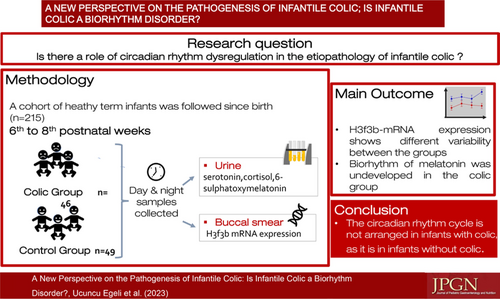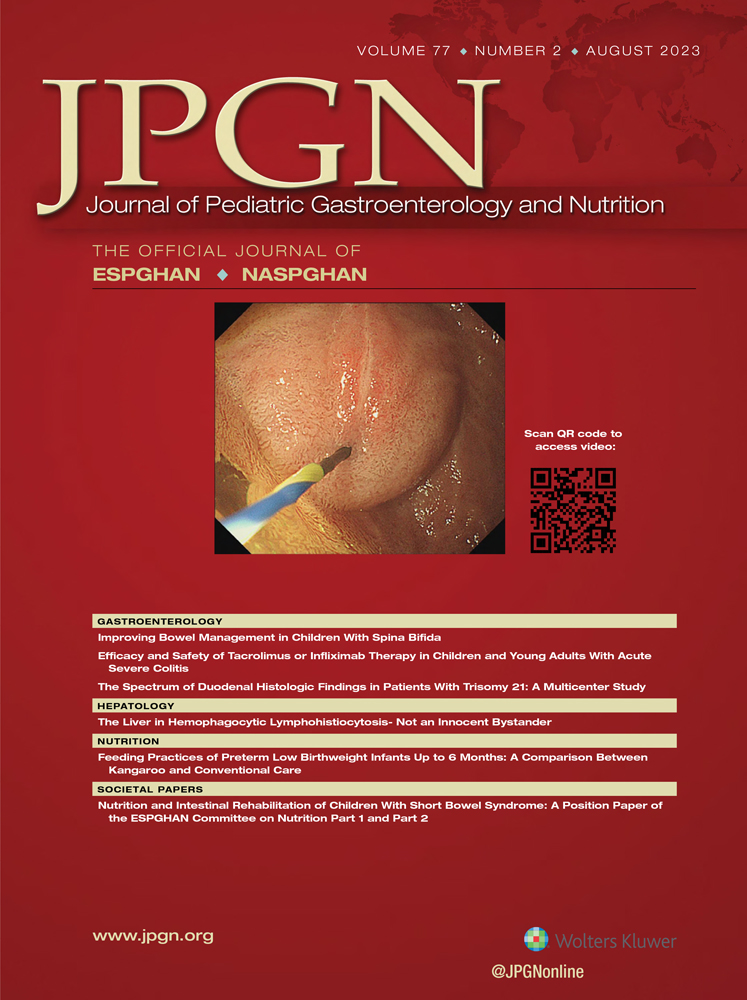A New Perspective on the Pathogenesis of Infantile Colic
Is Infantile Colic a Biorhythm Disorder?
The authors report no conflicts of interest.
Supplemental digital content is available for this article. Direct URL citations appear in the printed text, and links to the digital files are provided in the HTML text of this article on the journal’s Web site (www.jpgn.org).
Sources of Funding: This work was supported by Dokuz Eylul University (Grant number: 2017.KB.SAG.026) and partially carried out at Dokuz Eylul University Medical School Learning Resources Center Research Laboratory (R-LAB).
Abstract
Objectives:
In this study, we investigated the relationship between infantile colic, migraine, and biorhythm regulation, by evaluating biochemical and molecular parameters.
Study Design:
Healthy infants with and without infantile colic were eligible for this prospective cohort study. A questionnaire was applied. Between the 6th and 8th postnatal weeks, day and night circadian histone gene H3f3b mRNA expression and spot urine excretion of serotonin, cortisol, and 6-sulphatoxymelatonin were analyzed.
Results:
Among the 95 infants included, 49 were diagnosed with infantile colic. In the colic group, defecation difficulty, sensitivity to light/sound, and maternal migraine frequency increased and sleep disruption was typical. In the melatonin analysis, the difference between day and night levels was significant in the control group, indicating an established circadian rhythm (P = 0.014). In the colic group, there was no day-night difference (P = 0.216) in melatonin, but serotonin levels were higher at night. In the cortisol analysis, day-night values were similar in both groups. Day-night variability of H3f3b mRNA levels between the groups was significant, indicating circadian rhythm disturbance in the colic group compared to the control group (P = 0.003). Fluctuations in circadian genes and hormones expected in healthy rhythm were revealed in the control group, but were missing in the colic group.
Conclusion:
Due to the gaps in the etipathogenesis in infantile colic, a unique effective agent has not been discovered so far. This study, which demonstrated for the first time that infantile colic is a biorhythm disorder using molecular methods, fills the gap in this regard and points to a completely different perspective in terms of treatment.





